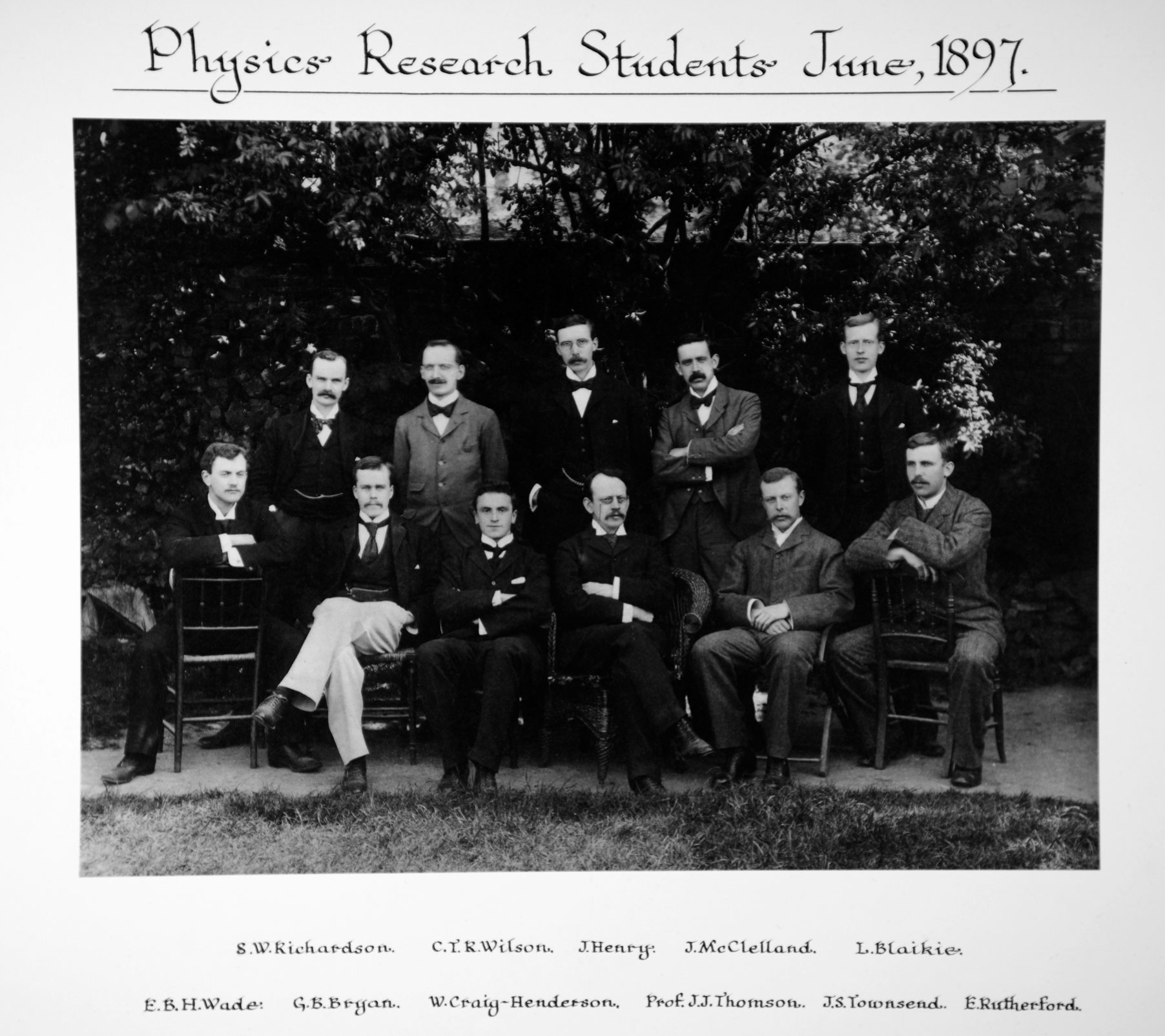As it happens, Carlsberg did do particle physics. The Danish beer giant was an unlikely benefactor of the Niels Bohr Institute – one of the great centres of theoretical physics research.
And Bohr himself even lived at the brewery’s “Honorary Residence” after winning the Nobel Prize, complete with a direct pipeline supplying free Carlsberg on tap! Just imagine what untold influence lager had on those groundbreaking discussions of quantum theory during Bohr’s thirty-year stay…

After my last blog about bubble chambers and beer, I thought, since it’s the festival season, why not go the whole hog and explore a few partying highlights from the history of physics.
The first Cavendish Laboratory Dinner, 1897
During the Christmas Holidays of 1897, the staff and students of Cambridge’s Cavendish Laboratory had a memorable dinner party at the Prince of Wales’ Hotel.
It was a “rollicking affair”. JJ Thomson, Professor of the Laboratory, was remembered by a student to be “as happy as a sand-boy”. Thomson, of course, had been very busy that year discovering the subatomic world. Another physicist, Paul Langevin, sang La Marseillaise with such fervour that a French waiter embraced him.
That night was the beginning of a Cavendish tradition: singing physics through the medium of light opera. Lyrics about atoms and ions were put to Gilbert and Sullivan tunes, long before Tom Lehrer. The next day, Thomson remarked that “he had no idea that the Laboratory held such a nest of singing birds”.
It must have been quite a noise, as the Proctors of the University came to enquire at the hotel what the “proceedings” were about. Fortunately, they did not enter the room – “being,” Thomson supposed, “impressed, and I have no doubt mystified, by the assurance of the landlord that it was a scientific gathering of research students”.

The first dinner was such a hoot that it became an annual occasion. The merry songs that emerged at these events were soon immortalised in regular published editions of The Post-Prandial Proceedings of the Cavendish Society.
Feynman’s entire anecdotal oeuvre
“There’s so much fun to be had”
Not many Nobel prize-winning physicists can say they’ve played the frying pan in a samba band at Rio’s Carnival; made complex calculations on napkins in strip bars; or spent a sabbatical on the Copacabana drinking themselves teetotal and seducing air-hostesses. A raconteur of almost mythic proportions, Richard Feynman had a natural aptitude for partying.
Costume parties really brought out the showman in Feynman. He was very versatile, boasting a clothing repertoire that ranged from a Ladakhi monk to God. But it was on one April Fools’ Day that Feynman surpassed himself. Sat primly on a chair, looking regally and nodding graciously to other guests, Feynman was the very image of Queen Elizabeth II – wig, white hat, green dress, purse and gloves. At the end of the evening, he performed his royal finale: a striptease!
We must unfortunately cut short of the entire Feynman backlog of anecdotes, so instead click here for a video of Feynman playing “orange juice” on the bongos.
Higgs’ champagne moment, 2012
On a Saturday night in Sicily, Peter Higgs was dining with friends when the phone rang. Fellow physicist John Ellis had called to tell Higgs to come to CERN. Swiftly, travel arrangements were made and another bottle of white ordered. History was being written.
A few evenings later, Higgs was in Ellis’ Geneva home sharing a bottle of champagne with family and friends – that day he had read a note that confirmed the particle he had predicted to exist 48 years ago had finally been found.
The following day, on 4th July 2012, CERN held a conference announcing to the world the discovery of the Higgs Boson. Emotions running high in the packed lecture hall, Higgs likened the experience to “being at a football match when the home team has won”. Fittingly then, on the Easyjet flight home to Edinburgh, he turned down more champagne in favour of a can of London Pride.
This blog was written as part of the Collider exhibition.